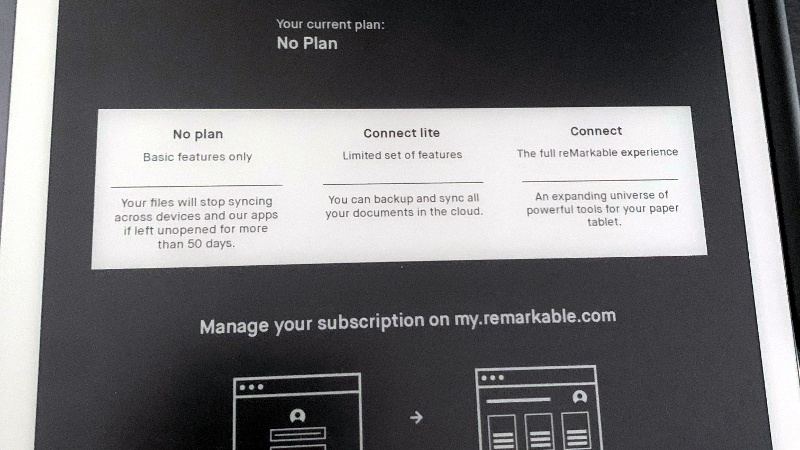2 Likes
#subscription
Open Vehicle Monitoring System is the Window to Your EV’s Soul

#carhacks #automotiveasaservice #automotiveprivacy #carmanufacturers #electriccar #evs #featuresondemand #functionsondemand #infotainment #openvehiclemonitoringsystem #paywall #privacy #subscription #subscriptionfee #subscriptionservice #hackaday
posted by pod_feeder_v2
3 Likes
One person like that
VIDIVERSE (Alex Proyas)
Indie (short) movies streaming platform

In August 2021 Proyas has announced that he is developing a new video platform titled "VidiVerse" for independent filmmakers, as an alternative to YouTube. [source]
I just subscribed to it, and am quite excited to explore. Lots of interesting-looking shorts on the platform. But it's too early for me to recommend it. Nevertheless, feel free to explore. Think of it what thy will :-)
Trailer
https://www.vidiverse.com/videos/vidiverse-vod-trailer
#alex #proyas #youtubeAlternative #vidiverse #indie #filmmakers #shorts #movies #platform #subscription #vod #bizarre #odd #art #thriller #dark #city
One person like that
1 Comments
2 Shares
New Cars Will Nickel-and-Dime You – It’s Automotive As a Service

#carhacks #currentevents #featured #originalart #automotiveasaservice #bmw #carnet #featuresondemand #functionsondemand #mercedes #mercedesbenz #nissan #subscription #subscriptionfee #subscriptionservice #toyota #volkswagen #hackaday
posted by pod_feeder_v2
2 Likes
6 Comments
Huzzah that #NetNewsWire (#FOSS #RSS reader) now supports #iCloud syncing, allowing me to dump #Feedbin. One more #subscription gone.
One person like that
Reuters is going Paywall. A hyperbundled content syndication would be preferable
The Reuters News Agency (part of Thompson-Reuters Publishing) is throwing up a registration wall around its news service, as a prelude to a $35/mo subscription service.
None of the three primary news financing models presently in use or vogue are viable: advertising, subscriptions, or the perennial technology favourite, micropayments.
Advertising leads to low-quality, sensational, and often propagandistic clickbait.
Subscriptions wall off a huge portion of the addressable public. One of the most-widely subscribed-to publications is the New York Times, with (5 million online subscribers according to Statista). Given about 150 million household units in the US, 96.67% of the US population does not have access to the Times.
People are drowning in accounts (well over 100/person in a 2015 survey[1]) and subscription services. Offerings are fragmented amongst these, and control battles lead to withdrawal of or blocking of materials during inter-corporate wars.
OECD per-capita spend on all publishing runs about $100/person, roughly the same as per-capita ads spend within the same countries, itself a tax of sorts. Annual spend on books in the US are about $18/capita. On cable TV $217.42/mo. (compare $205/mo for all utilities). As of 2008, 87% of US newspaper revenues were advertising, not subscriptions/newsstand sales.
A natural gateway exists --- not a perfect one, but good enough, at the level of the ISP provider.
Aggregation, not dis-integrations, is the general trend in payment systems. Both buyers and sellers benefit from predictable flows, income or revenues.
Regionally-pro-rated payments allocate costs according to ability to pay, which for information goods is a net social benefit.
Rolling an information access fee into fixed line and mobile Internet service, with an indexing of content accessed and a tier-and-bid based reimbursement schedule for publishers, seems to me the most viable path forward to something vaguely resembling a content tax, without actually going through a content tax mechanism. It would ensure universal access to readers and the public, compensation for creators, and the ability for those actually engaged in the process of creating new works to access the materials they need, legally and lawfully, answering in part the “why should I pay for information I don’t use” objection: the inforation you do use is itself predicated on information you don’t access directly yourself. The other answer to this rather tired objection is that you live in the world created by information access or denial of access, and in general, access to high-quality, relevant, useful information should be a net positive.
(Yes, events of the past decade temper my enthusiasm for that belief somewhat, though information rather than propaganda still seems likely a net positive.)
The concept could be trialed on a regional basis, rather than globally. It should offer any willing publication within a set of quality and bias tiers (there are third-party rating services, such as Ad Fontes Media, amongst others, which might serve as arbiters). A bidding process in which given tiers are compensated at specific rates, subject to competitive alternatives, should help address the “who gets paid and how much” question — high-bias low-accuracy clickbait is a cheap-to-produce product, but would also be compensated at a low rate.
See Also
Notes:
- Dashlane came up with this number in 2015, archived: https://web.archive.org/web/20150919202348/https://blog.dashlane.com/infographic-online-overload-its-worse-than-you-thought/ Experian cites a similar number, without source, in a 2019 identity fraud report https://www.experian.com/blogs/news/2019/01/30/global-identity-and-fraud-report/ A NordPass study finds > 100 passwords/person on average https://tech.co/news/average-person-100-passwords HN readers report upwards of 700 accounts https://news.ycombinator.com/item?id=19488899 Data quality here are poor, but the general scope is clearly large. Whether its increasing on an annual basis or if 100 accounts/person represents a metastable plateau is unclear.
#media #paywalls #subscription #UniversalContentSyndication #DeathOfNewspapers #advertising #Reuters #dreddit #InformationIsAPublicGood
One person like that
3 Comments



/cloudfront-us-east-2.images.arcpublishing.com/reuters/TTEZMWGUMZNDPE3ADAB3OFNR3Q.jpg)